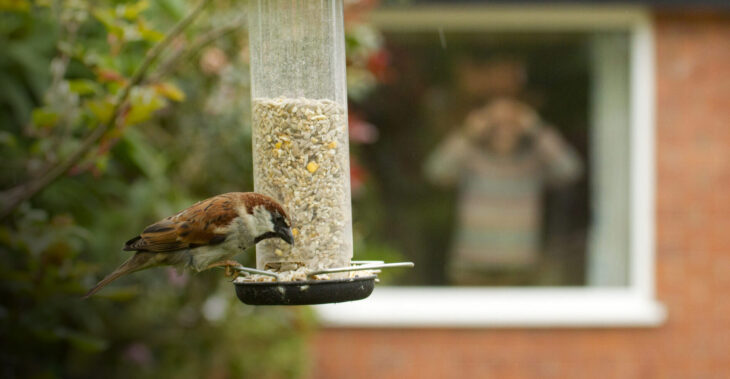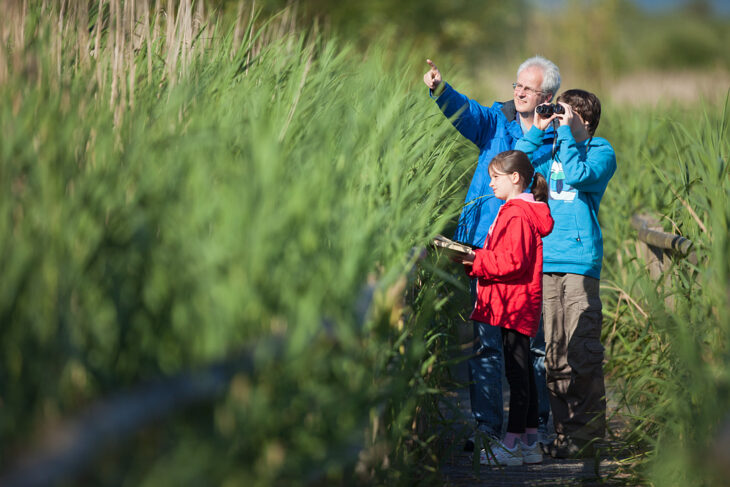Birdwatching is an increasingly popular hobby with people of all ages, and it is something you can do right on your doorstep! We can find birds in and around urban areas, from our gardens to schools to parks – especially if there are bird feeders out!
There are plenty of resources out there aimed at helping kids to get started, and it can be an exciting way to start learning about the fascinating lives of birds. As you watch them, can you observe different behaviours? Such as searching for prey, watching out for predators, or socialising…
There are different ways to try this, so pick whichever works best for you. Be warned – this can get addictive!
What you will need:
You can head out just as you are! But here are a few things that can help your birdwatching…
- Printed bird spotter sheet (optional – downloadable below)
- Binoculars (optional – you can see how to make your own binoculars)
- Notepad and pencil (optional)
- Camera (optional)
- Bird identification book or phone app (optional)
Watch from your window

How to watch from your window:
Tip: If you have a garden, put out some food for the birds. Different birds feed in different ways, so try to have a mix of feeder styles and foods, and don’t forget to leave some on the floor for the ground feeding species. You can learn more about how to feed garden birds here. Keep your feeders topped up – once birds know there’s a regular food source, they’ll keep coming back.
- Position yourself behind a window and stay quiet and still! The aim is for the birds to not know you are there.
- Wait… and watch. If you have a feeder, keep your eyes on this. Also, if you have a camera it is a good idea to keep it positioned on the feeder so that you are ready when a bird appears.
- If you don’t have a garden, look out your window and scan the street. Features such as fences, bin sheds and rooftops are all places that birds are likely to rest from time to time. Importantly, don’t forget to look at the sky!
- It can help to make a note of what you see. If you don’t know what species it is, note down some features so that you can try to identify it later on.
Watch while walking

How to watch birds while walking:
- The key to this is to be as stealthy and quiet as you can – you don’t want to scare the birds away!
- Listen for sounds such as bird song or rustling in the trees as this will help you know where to look.
- It sounds obvious – but don’t forget to look up!
- Use your eyes to locate the bird. Once you have found it, pause your walk and lift your binoculars to your eyes to see the bird in more detail. (Experienced watchers may be able to do this step while continuing to walk, but it requires some coordination).
- Practice trying to identify birds in flight and take photos on your phone or a camera so that you can try to identify any unknown birds when you get back home.
- You could also add a citizen science element. Seek by iNaturalist is an identification app, great for using with young people. All you need is a smartphone – download the app, take a photo of your bird and it will identify it for you – plus the data gets recorded so it is great for data scientists!
Binocular advice
Binoculars can help you get a lovely clear view of a bird’s features and colours. It can take a bit of practice, so find the bird with your eyes first and then, without moving your eyes, lift the binoculars to your face.
- Remember to stop walking when using binoculars to avoid any falls!
Tell us what you saw using #DiscoverLearnPlay
